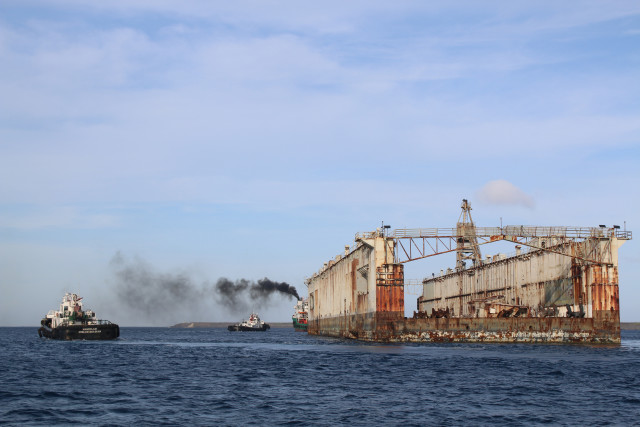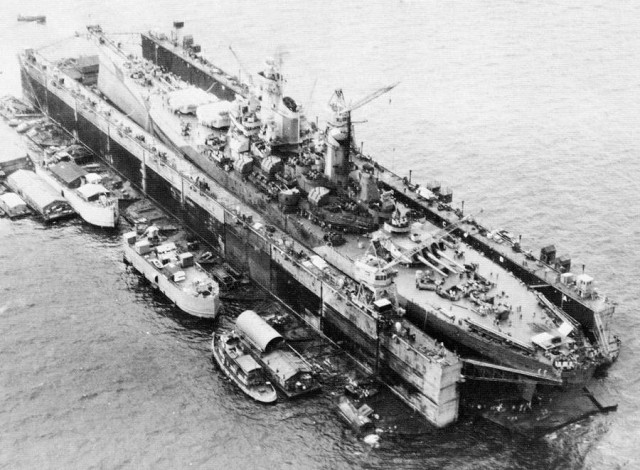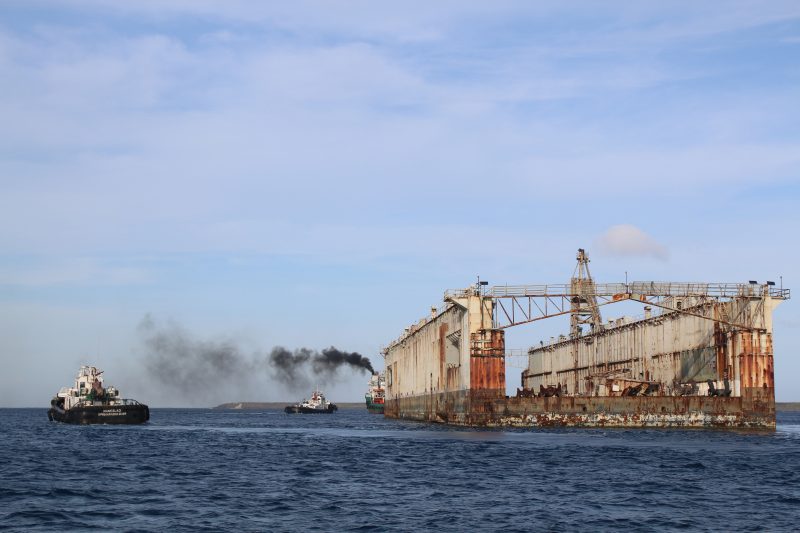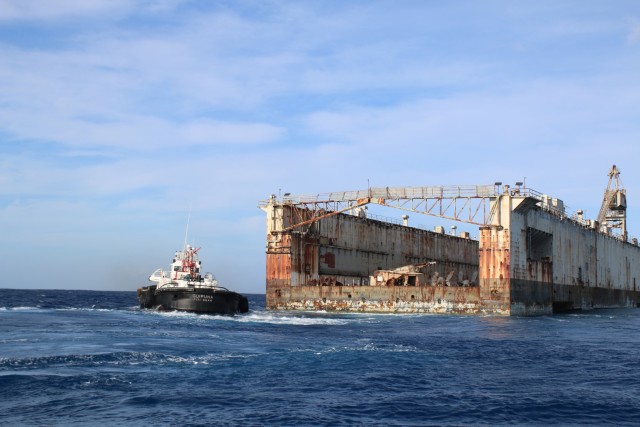
The Richland drydock, in use in the Pacific since World War II, was moved to the Philippines from Naval Base Guam in January.
The 467-ton tug Rhocas and several tugboats were required to guide the drydock out of Apra Harbor to prepare for the open-ocean tow, which took place over the course of several days.
“I’ve been working on this drydock since I was 18 – in the 1970s and ’80s,” Paul Yatar, a crane operator with Guam Shipyard, said in a Navy statement. “I worked on her while she was an active drydock, but it [sic] has reached its lifecycle, and it’s a good thing to see it go after all this time.”
What will happen to the drydock in the Philippines is not clear. It has a deep basin that can be flooded and then drained after a ship floats in, allowing for ship repairs.
The drydock was part of the extensive US naval establishment in Guam. This island has been key to US Pacific defence strategy since the Spanish-American War. The drydock was used to repair and maintain the many US Naval ships that were based in Guam. It was an essential part of the US ability to maintain its presence in the Pacific.
Richland is more than two football fields long, 124 feet wide and 57 feet tall. It was built by the Chicago Building & Iron Co., from Eureka, CA, in 1943. The following year, it was put into commission. It was first put to use in Pearl Harbor, Hawaii, and then in the Eniwetok and Uithi atolls. Eventually, it made its way to San Pedro Bay, the Philippines, to be used with U.S. and Allied ships near the end of World War II.

After being reclassified as a medium auxiliary floating drydock in 1946, it was renamed Richland in 1968 upon arriving in Apra Harbor when the Vietnam War was reaching its peak. Guam was a major jumping-off point for ships and aircraft at the time.
The piers at the base have been renovated over the last few years. Since then, there is no place for the antiquated drydock, according to Captain Alfred “Andy” Anderson, the base’s commanding officer, in a statement last fall. New facilities are being built at the Guam base. The Pacific is still a major area of operation for the US navy, especially given the tensions in the South China Sea.

